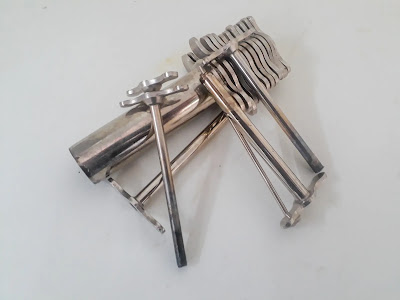Uncovering Plant Pathogens with a Cork Borer in the Laboratory
- To make a well, place the cork borer in the middle of the plant pathology laboratory medium & gently twist it.
- Depending on the laboratory experiment, change the bore size to generate wells of various sizes.
- To conduct various experiments at once, create numerous wells on the same surface.
- To make ideal wells for the inoculation of microorganisms, use a cork borer.
- Create wells for transferring materials from one media to another using the cork borer.
- For the laboratory incubation of cultures, make wells.
- Use the cork borer to create wells so that assays like PCR & ELISA can be carried out.
- Create wells for laboratory experiments with the cork borer.
Create perfectly-sized wells for experiments
A cork borer often called a plant tissue corer, is a lab instrument frequently employed in plant pathology for the extraction of tiny cylindrical samples of plant tissue. They can also be used to precisely form wells in Petri dishes or other laboratory materials, thus their usefulness isn’t limited to that. These wells can be used for a range of plant pathology experiments, including pathogen isolation, bioassays, and inoculation studies.
The accuracy and consistency that a cork borer offers when creating wells are one of its main benefits. The instrument can be modified to make wells with a particular diameter and depth, ensuring that the experiments are carried out under identical circumstances. This makes it possible for the experiments to produce accurate and trustworthy results.
Additionally, cork borers can be used to create wells in a number of different media, such as agar, potato dextrose agar, & nutritional agar. Due to its adaptability, a variety of studies can be carried out, including those that examine the development and pathogenicity of various infections or evaluate the effectiveness of various preventative measures.
The investigation of plant-microbe interactions is another crucial application of cork borers in plant pathology. Researchers can examine how pathogens and helpful microbes interact with plant cells or tissues by making wells in the medium. This knowledge can be used to comprehend the etiology of diseases and design biological control strategies.
Conclusion:
Cork borers are an effective instrument for plant pathology because they allow for the accurate creation of wells in laboratory mediums and the extraction of tissue samples. This enables a range of studies to be carried out, providing important insights into plant health.

